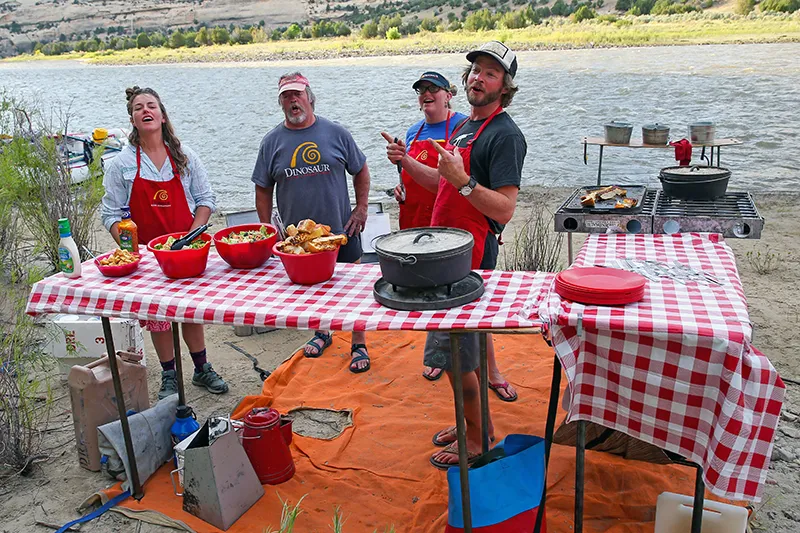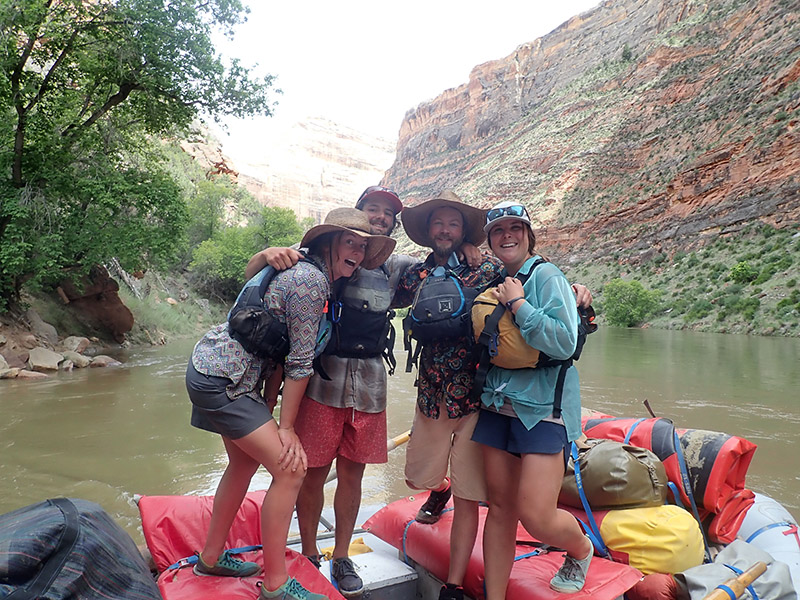If you live anywhere around the mountain west, or you have been following the news then you’ve probably had your eye on the weather forecast this winter. Jackson Hole broke records this year for snowfall in February, Utah is breaking snowfall records in April. Ski enthusiast or not, the snowfall this year has been exciting. It’s some much needed drought relief for one and for those who aren’t the biggest fans of winter, it means a green spring and summer. Lots of snow becomes lots of water flow. Creeks will be swollen to bank full, rare stretches of river – like the Dolores – will have enough water to float down.
A big snow pack means a great rafting season. High water, depending on the stretch of river means big hits in big waves. Current will be strong as long as cfs (cubic feet per second) remain high. So how do you define “high” water? That’s entirely dependent on the stretch of river you’re looking at. Let’s take a look at the Yampa. The Yampa River is a good gauge of what high water looks like for a number of reasons. First and foremost, it is un-dammed. It’s not something we think of often, as most of the major dam building projects in this country happened in the 1950’s. However, there are some rivers that still flow wild and free. No dam means no one has their hand on the faucet, so to speak. This means spring runoff and snow melt run down the head waters and through the river unchecked by reservoirs. Typical high-water season on the Yampa River occurs mid-May to early June and is anywhere from 12,000 – 16,000 cfs through Dinosaur National Monument. After the spring peak, the flows steadily decrease until they hover anywhere from 600 to 12 cfs – too low to raft. This year the river basin that feeds the Yampa is reporting 119% of a thirty-year median. So, what does this mean? Typically, depending on how quickly things warm up as we move into spring and summer, the spring peak will come later and will be more sustained. A more sustained peak means a longer running season generally.
So why all the buzz? Other than the big hits in big white water, the additional water for irrigation and storage in the reservoirs downstream, it’s a huge boon for the environment at large. The native species of the Yampa and by extension the Green and Colorado rivers are dependent on high seasonal floods for spawning purposes. More water brings more nutrient and more sediment downstream, restoring the beaches we love to camp along and feeding the animals we love observing. And while the Yampa may be emblematic of what high water looks like, it is by no means the only river where the water will rage this summer. All across the west snow pack’s are well above their average. Even with dams, side creeks will swell and fill their mother rivers. And reservoirs can only get so full and that water must go somewhere and that somewhere is downstream.
Excited? Good, you should be. I would be remiss in my duties as a whitewater enthusiast if I didn’t urge a touch of caution. When looking to get on the water this year prepare yourself appropriately. This means selecting river runs that are suitable for your ability. Like checking the avalanche forecast, check flows before you go and what they are forecast to do. Make sure you and your team have the necessary equipment to enjoy the whitewater safely. And for any stretches you feel you can’t do on your own, there are experienced and reliable outfitters who are there to ferry you safe and sound down the river. Stay safe and stay excited! It’s our collective passion for these places that keeps them pristine for generations to come.


